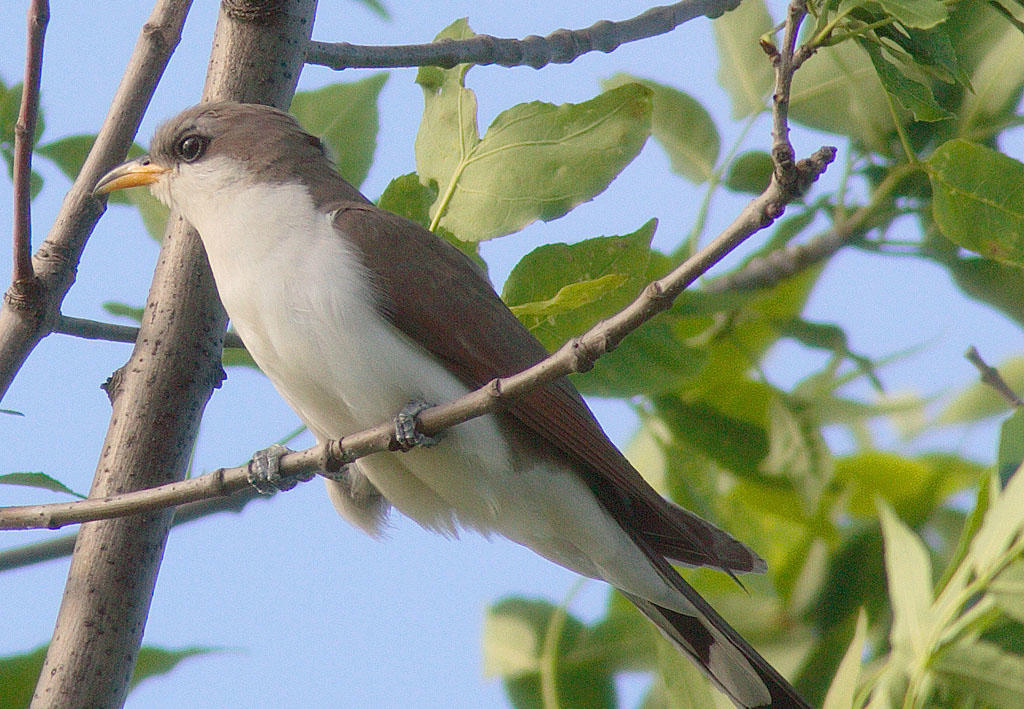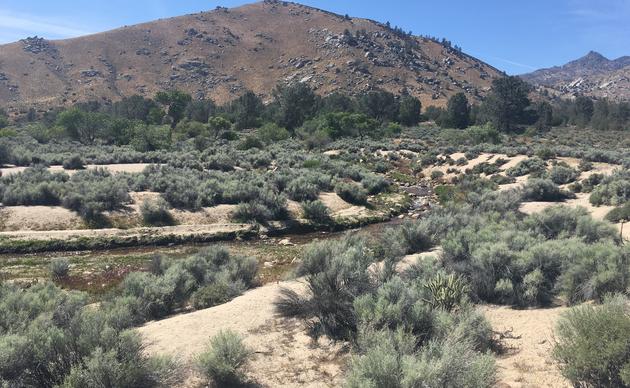
When Reed Tollefson came to what is now the Audubon Kern River Preserve in 1987, Western Yellow-billed Cuckoos were a thriving part of the landscapes massive diversity of migratory birds.
“There might have been as many as 24 nesting pairs in the area around the Preserve back then,” Tollefson recalls. “You’d hear or see them pretty frequently passing through from tree to tree.”
The Western Yellow-billed Cuckoo is a jay-sized, long-tailed bird with a broad curved bill and large white spots on the underside of its tail. It is identical in appearance to its eastern counterpart, but the two populations do not interbreed, and the U.S. Fish and Wildlife Service identifies Yellow-billed Cuckoos west of the Continental Divide as a Distinct Population Segment for conservation purposes.
Tollefson believes that the birds are drawn to the native riparian forest in the South Fork Kern River, making it one of the few spots in California – along with the Sacramento and Colorado Rivers – where the Western Yellow-billed Cuckoo is known to nest.
Now those earlier numbers have declined dramatically and in recent years fewer and fewer Western Yellow-billed Cuckoos have been spotted at the Preserve. The latest survey, conducted this summer by the Southern Sierra Research Station found just one probable nest and another possible one.
“I joined the survey team this summer, and we just scoured the area,” Tollefson says. “What we’re seeing here is really just a dramatic collapse.”
The drop in numbers at the Audubon Kern River Preserve is part of a broader decline across the West. Once plentiful, Western yellow-billed cuckoos are now gone from British Columbia and the Pacific Northwest, and most of the remaining birds are found in isolated patches of riparian habitat along rivers in Arizona, California, and New Mexico.
This decline in Western Yellow-billed Cuckoo is what prompted it to be listed as Threatened under the Endangered Species Act in 2014. Audubon California supported that listing, and more than 2,200 activists submitted comments in support, as well.
Now, even though, very little has changed for the bird on the ground, a group of ranchers, miners, and other business interests has petitioned to delist the Western Yellow-billed Cuckoo, challenging its distinct population status. The U.S. Fish & Wildlife Service is conducting a listing review and is taking comments.
While the population numbers are clear, there isn’t a lot of scientific research to explain the rapid decline in Western Yellow-billed Cuckoos. Habitat loss is always a prime suspect, and the U.S. Fish & Wildlife Service has struggled to define critical habitat for protection. Problems like habitat loss or fragmentations at the bird’s wintering grounds in Central American could also be a factor.
Nonetheless, Tollefson will continue to protect the native cottonwood riparian forest in the hope that the bird will return in numbers.
“This place has a lot of importance for all kind of neotropical migrants, including the Western Yellow-billed Cuckoo,” says Tollefson. “We’ll keep fighting for it, so that these birds have a place stop and rest on their migratory journeys or to raise their familes.”
Audubon California recently supported the continued listing of the Western Yellow-billed Cuckoo for its five-year review, and we will push hard to ensure that it status remains during the current review.
By Garrison Frost
Support Kern River Preserve
Through the support of people like you, we protect this globally- important place of refuge for migrating and breeding birds.




